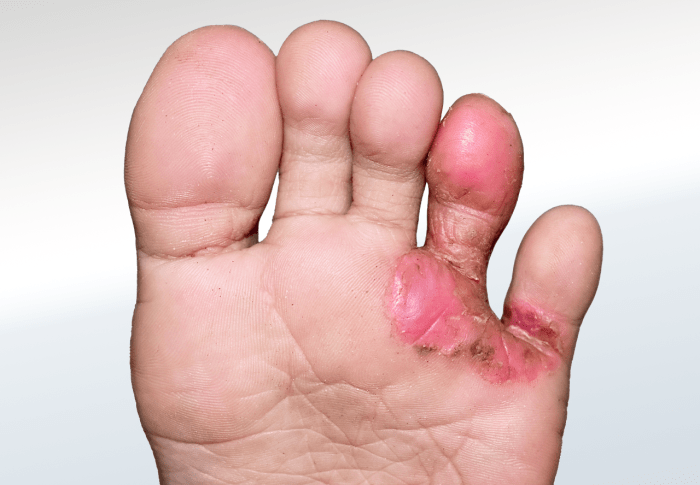Any acute inflammatory pus-forming bacterial skin infection such as impetigo – Impetigo, an acute inflammatory pus-forming bacterial skin infection, is a prevalent condition that affects individuals of all ages. This highly contagious infection manifests in various forms, each with distinct characteristics and presentations. Understanding the causes, risk factors, and treatment options for impetigo is crucial for effective management and prevention.
This article delves into the complexities of impetigo, providing a comprehensive overview of its clinical presentation, diagnostic criteria, and potential complications. By exploring the latest research and evidence-based practices, we aim to empower readers with the knowledge and tools necessary to address this common skin infection.
Definition of Impetigo
Impetigo is an acute inflammatory pus-forming bacterial skin infection characterized by the formation of vesicles or pustules on the skin’s surface. It is a common skin infection that primarily affects children and infants.
There are two main types of impetigo:
- Non-bullous impetigois the most common type, causing small, superficial vesicles or pustules that rupture easily, leaving a honey-colored crust.
- Bullous impetigois less common and is characterized by larger, fluid-filled blisters that can spread rapidly.
Causes and Risk Factors: Any Acute Inflammatory Pus-forming Bacterial Skin Infection Such As Impetigo

Impetigo is caused by bacteria, most commonly Staphylococcus aureusand Streptococcus pyogenes. These bacteria can enter the skin through breaks or abrasions and multiply rapidly, causing an infection.
Risk factors for impetigo include:
- Skin trauma, such as cuts, scrapes, or insect bites
- Poor hygiene practices
- Crowded living conditions
- Weakened immune systems
- Contact with someone who has impetigo
Clinical Presentation and Symptoms

Impetigo typically presents with small, round vesicles or pustules that develop on the face, arms, or legs. These lesions are often surrounded by a red, inflamed area.
As the infection progresses, the vesicles may rupture and release a clear or yellow fluid that dries and forms a honey-colored crust. The lesions can be itchy and painful, and some individuals may experience fever, chills, or swollen lymph nodes.
Diagnosis and Differential Diagnosis
Impetigo is diagnosed based on its clinical presentation and a physical examination. In some cases, a culture of the fluid from the lesions may be performed to confirm the diagnosis and identify the specific bacteria causing the infection.
Differential diagnosis of impetigo includes:
- Eczema
- Psoriasis
- Contact dermatitis
- Herpes simplex virus
Treatment Options
Treatment for impetigo typically involves topical or systemic antibiotics. Topical antibiotics, such as mupirocin or fusidic acid, are applied directly to the affected area and are effective in treating mild cases of impetigo.
Systemic antibiotics, such as cephalexin or erythromycin, may be prescribed for more severe cases or if the infection is widespread. Treatment typically lasts for 7-10 days.
In addition to antibiotics, antiseptic solutions and wound care can help prevent the spread of infection and promote healing.
Complications and Prevention

Impetigo can lead to several complications, including:
- Scarring
- Cellulitis (a deeper skin infection)
- Sepsis (a life-threatening infection of the bloodstream)
Proper hygiene and wound care are essential for preventing the spread of impetigo. Individuals should:
- Wash their hands frequently
- Keep wounds clean and covered
- Avoid sharing personal items, such as towels or clothing
- Stay home from school or work if they have impetigo
Top FAQs
What are the common symptoms of impetigo?
Impetigo typically presents with fluid-filled blisters or pustules on the skin, accompanied by itching, pain, and redness.
How is impetigo diagnosed?
Diagnosis of impetigo involves a physical examination and, in some cases, laboratory tests to confirm the presence of bacteria.
What are the treatment options for impetigo?
Treatment for impetigo typically includes topical or oral antibiotics, antiseptic solutions, and wound care to promote healing and prevent infection spread.
Is impetigo contagious?
Yes, impetigo is highly contagious and can be spread through direct contact with infected skin or contaminated objects.
How can impetigo be prevented?
Maintaining good hygiene, avoiding skin trauma, and promptly treating any skin infections can help prevent the development of impetigo.